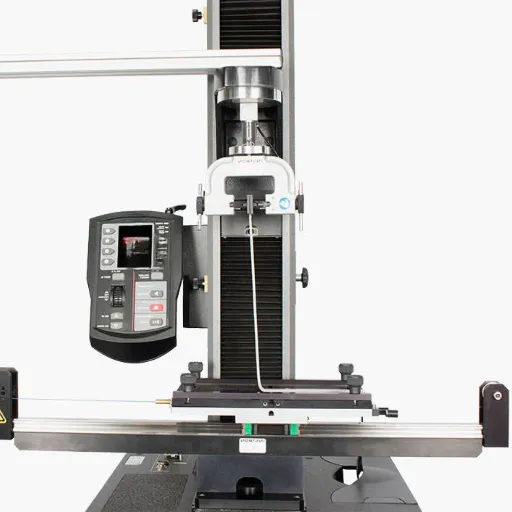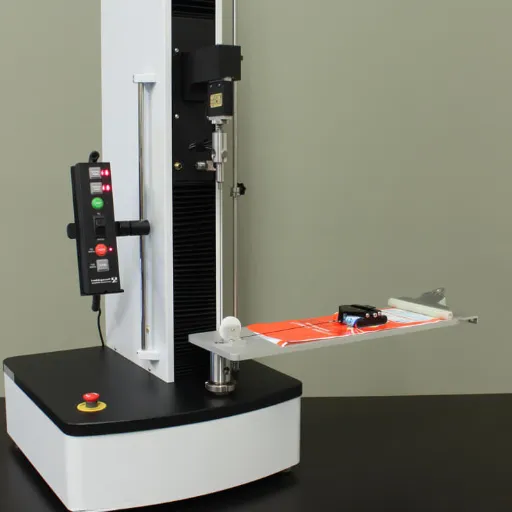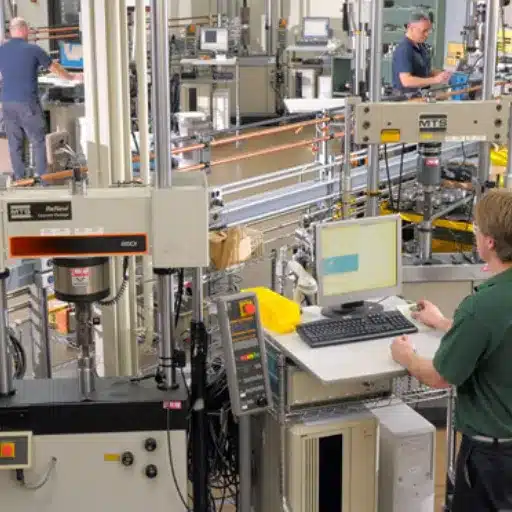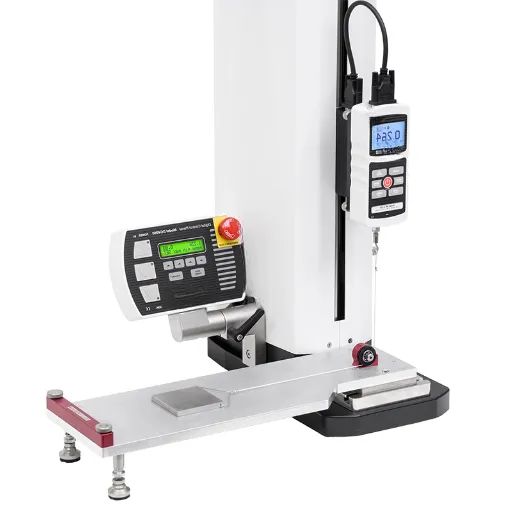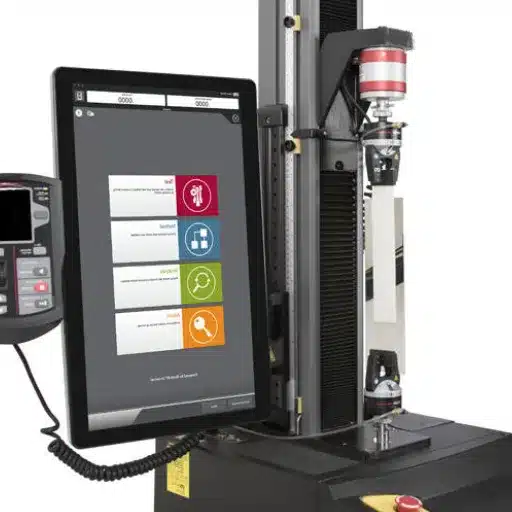Shear testing plays an instrumental part in material science, where it acts as a vital force for studying the way materials behave under applied forces. Testing for shear stress with materials can provide engineers and researchers with valuable information regarding strength, resistance to end deformation, and durability. The results are employed in designing and developing applications such as structural materials in aerospace and construction, modern composite materials in automotive, and manufacturing industries. This article explores the basics of shear testing, its methods, and how it impacts material development for performance in the field. Whether you are an expert or a layman interested in the material science, this article will highlight how shear testing stands for engineering and technological realization.
Understanding Shear Testing
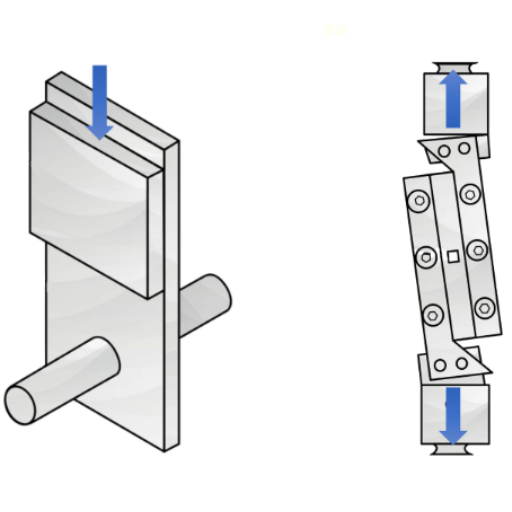
Shear testing determines the resistance offered by materials against a force that causes layers to slide on each other. The data available from shear testing relates directly to the shear strength of the material, which is necessary for assessing if the material will hold a given imposed stressing without failure. Usually, shear testing is performed on materials using standardized machines comprising shear frames or torsional devices. Industries such as aerospace, automotive, and construction require shear testing so material behavior under load is well understood for safe and efficient working conditions.
Definition of Shear Testing
Shear test is a primary method of mechanical testing used to assess the manner in which a material responds to shear stress, such stress being that of forces acting essentially parallel to its surface and which tend to cause sliding of adjacent layers of the material. It helps the analyst with information relating to shear strength, modulus and deformation behavior of the materials. The recent database indicates an advance in the aspects of shear testing toward extended applications in material science, primarily testing of composites, alloys, and polymers. Aerospace industries demand shear tests on the materials used for aircraft structures so that the materials could stand shear forces arising due to extreme operating conditions without compromising safety or performance. Leveraged by state-of-the-art equipment and computational modeling, shear testing is evolving as a key methodology in materials research and quality assurance.
Importance of Shear Testing in Engineering
Shear testing assesses how materials respond to forces that cause the material layers to slide against each other. This data is essential in assessing the mechanical behavior of materials like metals, composites, and adhesives. These are materials expected to endure shear stresses in practical applications such as structural support, aerospace, and automotive industries. Assessing shear strength and deformation behavior allows engineers to make enhanced decisions toward the safe and economic design of engineered systems. It is these assessments made possible by an accurate evaluation underlined by shear testing that drives invention and reliability in storm industries.
Applications of Shear Testing in Various Industries
1.Construction and Civil Engineering
Shear testing stands necessary to assess strength or stability of materials used in construction: concrete, steel, or other composite materials. Without this determination, structures may not resist lateral forces arising from wind, earthquakes, or other environmental stresses.
2.Aerospace Industry
In aerospace applications, shear testing is employed to establish the behavior-performance of light composites, adhesives, and alloys with regard to extreme conditions, thus sustaining safety and reliability in aircraft and spacecraft designs.
3.Automotive Engineering
Tests involving shearing are used by automotive manufacturers to determine the performance of components, including but not limited to fasteners, joints, and structural materials. This helps to enhance vehicle performance and accelerate crashworthiness.
4.Manufacture of Consumer Electronics
Shear tests serve to verify the integrity and bonding strength of solder joints, adhesives, and thin films used in consumer electronics so as to enhance resistance to mechanical stress and hence longevity.
5.Geotechnical Engineering
Shear tests of soils and earth materials are paramount to geotechnical engineers when assessing slope stability, designing foundations, and earth retention systems for safe and sustainable construction.
Types of Shear Tests
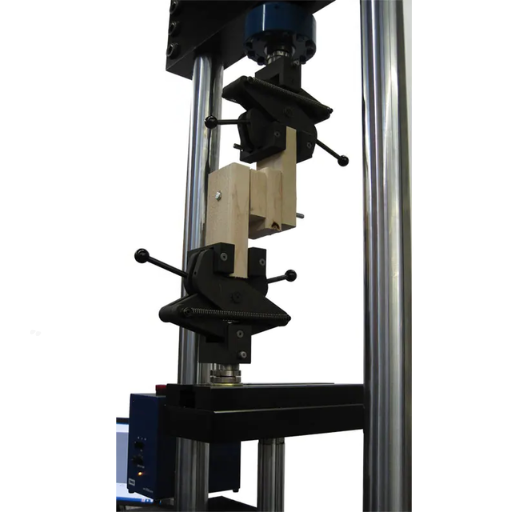
There are several types of shear tests, including direct shear tests, triaxial shear tests, vane shear tests, punch shear tests, and torsional shear tests.
|
Test Type |
Purpose |
Material |
Stress Type |
Apparatus |
|---|---|---|---|---|
|
Direct Shear |
Assess friction |
Soil |
Normal & shear |
Shear box |
|
Triaxial Shear |
Measure strength |
Soil/Rock |
Axial & radial |
Triaxial cell |
|
Vane Shear |
Test clay strength |
Clay |
Shear stress |
Vane device |
|
Punch Shear |
Evaluate shear force |
Thin films |
Shear stress |
Punch tool |
|
Torsional Shear |
Analyze torsion |
Metals |
Torsional shear |
Torsion rig |
Single Shear vs. Double Shear Tests
Single shear involves failure along one shear plane, while double shear involves failure along two parallel shear planes.
|
Parameter |
Single Shear |
Double Shear |
|---|---|---|
|
Shear Planes |
1 |
2 |
|
Load Capacity |
Lower |
Higher |
|
Failure Mode |
Single Plane |
Two Planes |
|
Stress Distribution |
Concentrated |
Distributed |
|
Material Utilization |
Partial |
Efficient |
|
Applications |
Simple Joints |
Complex Joints |
Shear Vane Test Explained
This is an in situ test to measure the undrained shear strength of cohesive soils, especially clays. The four-blade vane is pushed into the soil and then rotated at a constant angular velocity until soil fails in shear along a cylindrical surface between the blades, and the torque is measured. It is one of the quickest methods for testing soil strength on-site, thereby providing preliminary information about the soil properties without having to conduct unnecessary laboratory tests. Care should be taken with respect to vane dimensions, rotation speed, and soil consistency to get reliable magnitude of undrained shear strength.
Choosing the Right Type of Shear Test
I tend to look at the characteristics of the soil, its conditions during testing, and the peculiar engineering properties required by the project. For cohesive soils, the testing of a vane shear is suitable because it aligns closely with undrained strength given that it is efficient and direct. Should one require further parameters such as the stress strain relationship, then dependence on a triaxial shear test would be more recommended. With granular or frictional soils, the direct shear test tends to be predominantly used due to its relative ease in analyzing drained shear strength. Ultimately, a compromise would be realized, wherein the needs of accuracy, those of the project, and site-specific considerations all come into play.
Shear Testing Equipment
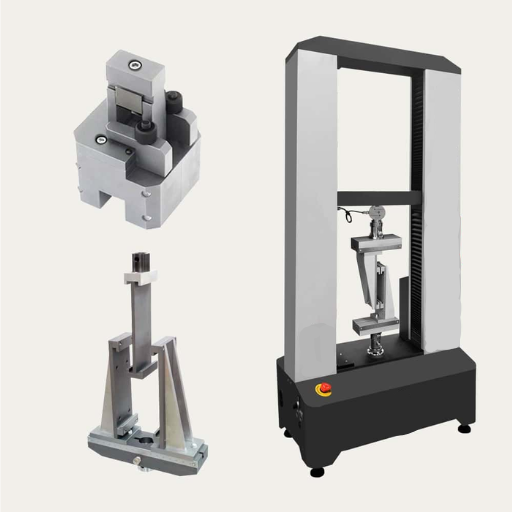
Shear testing apparatus varies according to the method carried out and the soil-specific nature under scrutiny. The commonly used apparatus includes the vane shearing apparatus to perform rapid in-situ tests for the determination of undrained shear strength, the triaxial apparatus for detailed studies concerning stress-strain behavior and the parameters of shear, and the direct shear apparatus for simple measurement of drained shear strength, especially for granular soils. The choice of equipment depends on the accuracy maybe required in the test, type of soil, and the objectives of the project.
Overview of Universal Testing Machines
Universal Testing Machines are types of machines available for testing all physical properties of materials under some external loading form such as tension, compression bending, and shearing. Of major importance are tensile strength, elongation, Young’s modulus, and compressive strength. Such machines consist basically of load-frames, load cells to measure applied forces accurately, and extensometers or strain gauges to measure deformations. The machine is capable of accepting a range of grips and fixtures for the testing of metals, polymers, composites, and others. Modern UTMs are computer-integrated for automatic data acquisition and analysis, yielding accurate and standardized results across industries such as construction, aerospace, and manufacturing.
Specialized Shear Test Machines
Specialized shear test machines are used to investigate the shear strength and shear modulus of materials under prescribed loading conditions. They normally incorporate load cells and force measurement sensors parallel to the surface of the sample that guarantee accuracy and repeatability. Depending on the application, the testing instrument comes with fixtures such as single-or double-shear set-ups, punch tooling, and torsional shear heads, allowing for variations in material geometry and test standards. The materials commonly tested include metals, polymers, adhesives, and composites, covering applications in construction, aerospace, and automotive engineering. The newest generation of shear test machines also offers integrated software to facilitate in-line data acquisition and analysis to ASTM and ISO standards marking a key factor in understanding material behavior towards optimizing performance and complying with safety standards.
Common Testing Equipment Used in Shear Tests
1.Universal Testing Machines (UTMs): These multidimensional machines find application in multiple materials testing areas, such as shear tests, and if equipped with the right fixture, can aptly measure shear strength.
2.Shear Test Fixtures: Shear test fixtures are essential for carrying out controlled and repeatable shear tests in order to align the specimen appropriately and apply the load.
3.Portable Shear Test Equipment: Small gadgets used for site evaluation of materials and often employed in construction and geotechnical realms.
4.Dynamic Shear Rheometers (DSRs): Measure high-precision test viscoelastic properties, mainly for the study of asphalt and other materials considered soft.
5.Data Acquisition Systems: Having these electronic systems attached in the setup, they are used to collect, process, and analyze data at the moment the test is occurring to accurately depict how the specimen behaves under the shear load.
Methodologies for Conducting Shear Tests
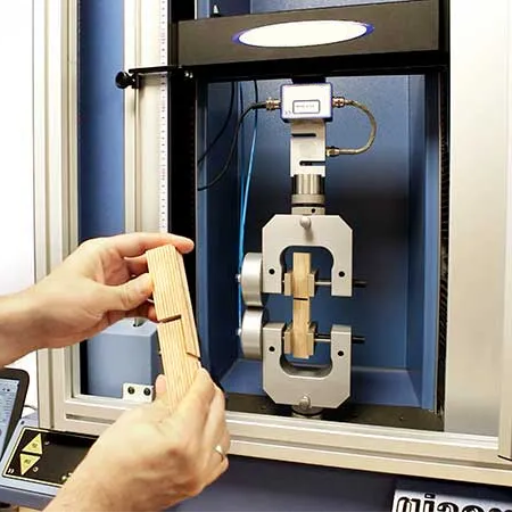
Shear tests consist of applying a precisely controlled stress or strain on the sample and seeing how it responds to shear loading. Some of the most common methods are:
1.Direct Shear Test: Here, the sample is placed in the shear box, the normal load is applied, and then a horizontal shear force is applied until failure. The parameters recorded are shear strength and cohesion.
2.Triaxial Shear Test: Usually the preferred means for testing soil and rock samples, this test applies confining pressure and a deviatoric stress, assessing shear strength under the applied stress conditions. For example, one may have unconsolidated-undrained (UU) tests, consolidated-undrained (CU), and consolidated-drained (CD) versions.
3.Rheological Shear Testing: Materials like asphalt are subjected to oscillatory shear forces to ascertain their viscoelastic properties, characterizing them by complex modulus and phase angles with a Dynamic Shear Rheometer (DSR).
4.Torsional Shear Test: By applying torque to cylindrical samples, this test analyzes stress distribution, shear modulus, and material behaviors upon rotational shear forces.
These methodologies are adopted for the accurate determination of shear parameters, which is pivotal for the advanced characterization of how a material performs under various stress conditions.
Step-by-Step Guide to Conducting Shear Tests
1.Sample Preparation: Make sure that the test specimens conform to the dimensions and length parameters required as specified by the respective testing standards. If any surface irregularities or defects exist, remove them so that they do not affect the results.
2.Equipment Calibration: Calibrate the shear testing machine to guarantee the correct application of force and correct measurement of it. Check that all load cells, displacement sensors, and strain gauges are functioning correctly.
3.Fixture Alignment: Fix the specimen within the fixture and ensure it is aligned such that it will not be subjected to eccentric loading or vibrations during the test.
4.Preload Application: Apply a preload if any slack must be removed or the alignment of fixtures adjusted. This ensures the test begins from a consistent starting point.
5.Application of Shearing Forces: Starting the test by applying the shear force and torque defined by the testing method. Shear loading should always be applied at a constant rate to assure correct data generation.
6.Data Acquisition: Parameters like shear stress, strain, torque, displacement, and temperature should be recorded continuously by integrated data recording systems throughout the test.
7.Monitoring and Control: The test should be monitored and controlled for any setbacks with the equipment or operational problems to keep it stable and precise.
8.Failure Observation: Identify how the specimen fails and record the load values at failure in order to understand the shear strength and deformation behavior of the specimen.
9.Post-Test analysis: Work through the observed data to calculate shear modulus, maximum shear strength, and various other mechanical properties and check if these results suit theoretical values or those of expected performance.
10.Reporting Results: Make a detailed report of the findings, encompassing test setup, methods, data output, and conclusions so that it can be reproduced and further used for material evaluation.
Testing Standards for Shear Strength Testing
Shear strength testing standards are established for consistency, reliability, and precision in determining material performance. The three major standards are:
1.ASTM D732 – The test method describes a procedure to determine the shear strength of plastics under uniaxial stress. It describes the specimen preparation, testing conditions, and the interpretation of the data to measure accurately the shear properties.
2.ASTM D5379/D5379M – The V-notched beam method is most widely used among composites and provides an assessment of in-plane shear properties. Concrete descriptions of geometry, loading, and analysis of the specimen enable direct and indirect characterization of materials.
3.ISO 1922 – This standard sets forth methods for the determination of shear properties in rigid materials. It covers the design of test apparatus, the control of strain rate, and the calculation of results so that excellent comparability and repeatability can be achieved throughout the world.
Use of such standards will ensure that shear strength data can be accepted everywhere and used for engineering analysis or design.
Interpreting Test Results: Shear Strength, Stress, and Strain
A test conducted for shear strength, stress, and strain must have an understanding of certain parameters measured. Shear strength is termed maximum stress undergone by an object in shear before the object fails. It is calculated by dividing the applied force by the area resisting the force inside the shear plane. Stress or, in general, σ, is a force internal to the area being applied on an object from outside, while strain or ε is the change in deformation that the object undergoes relative to the original dimensions.
When materials evolve through stress and strain, the information, in turn, provides the properties of materials like elasticity, for example, modulus of elasticity or modulus of rigidity. Often, shear testing results are presented by way of a stress-strain curve. This representation acts as a graphical output that shows how the material responds to being loaded with stress. Generally, the stress-strain curve will have an elastic zone trace describing reversible deformation of materials and a plastic zone indicating permanent deformation.
In order to accurately interpret results, correctly conducted tests must be considered, preferably adhering to accepted standards such as ISO and ASTM. Different variables exposed to testing, like strain rate and temperature, along with specimen preparation, generate significant effections on the results. These data are used by engineers and researchers to make informed progress for predicting material behavior in real applications, optimize their design procedures, and ascertain that they are compliant with safety and performance standards. Upon correlation of stress and strain, material thresholds would be defined and denoted for future use in making decisions concerning structural and material engineering.
Best Practices in Shear Testing
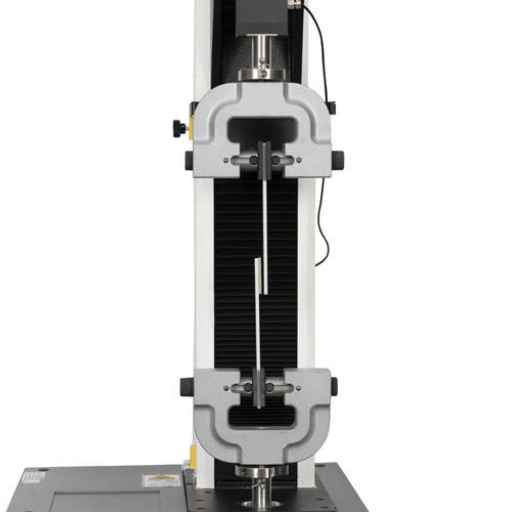
Shear testing has certain prerequisites to ensure that one obtains true and dependable results. First, proper specimen preparation is of utmost importance; all dimensions and surface conditions must be faithfully in line with the standards stipulated in ISO or ASTM. The specimen should be geometrically uniform to reduce variability in the output data. Moreover, it is essential to keep the test parameters such as strain rate and temperature constant, as these strongly affect the response of the material to shear stress. It is also recommended to keep the equipment calibrated and use fixtures to prevent loading off-axis. An accurate alignment should be maintained so that the loading corresponds to the intended shearing action. Well-documented specifications of the test conditions and process and findings are essential for repeatability and increase the reliability of the data for engineering matters.
Improving Testing Reliability
To encourage enhanced testing reliability, the adoption of standardized methodology and a strict application of previously established protocols should be followed, thus observing the recommendations of standard testing guidelines. Maintenance and calibration of the instruments need to be conducted regularly to minimize the error margin and to make sure the equipment always provides accurate results. A reduction in external interference, such as that due to temperature, humidity, or vibration, is equally important while conducting the tests. For the further processing of data, newest types of analytical software can be used, enhancing accuracy in identifying subtle patterns within the test results themselves, which improves repeatability and reliability.
Common Challenges in Shear Testing
One of the biggest challenges faced by me in shear testing is constant sample preparation, for any slight misalignment or surface condition affecting result accuracy. Maintaining precise control over environmental parameters such as temperature and vibration, however, demands painstaking attention during every cycle of the test to avoid variability in data. Amid the difficulties come choices of test methods and equipment setups for the given material and intended results that sometimes means a compromise between standards and practicality. Data interpretation is also challenging, especially while tackling intricate behaviors of the materials, requiring a more advanced analysis technique for generating useful observations.
Innovations in Shear Testing Techniques
Shear testing has seen recent developments with new techniques and technology deployed toward resolving some of the oldest challenges while improving the sheer accuracy and time efficiency of the methods. One significant innovation is the integration of automated systems coupled with real-time data acquisition wherein tests proceed without human interference, thus reducing variability and improving repeatability. On the other hand, there is deployment of state-of-the-art environmental chambers able to restrict simulation of real-world conditions such as temperature, humidity, and pressure so that the results can be more valid toward the actual scenarios of end use.
On the other hand, advances are being made towards digital image correlation (DIC) techniques to enhance the measurement of strain and deformation during shear testing more than ever before. This technique, which is perfectly non-contact, reveals comprehensive details about the behavior of the material throughout stress levels. Another evolution goes into the refinement of micro- and nano-shear testing methods that much benefit the feasibility study of thin films and coatings and other materials at the micrometer scale. These further developments not only grow the variety of materials that can be assessed but also advance the resolution and specificity of the data being gathered.
Last but not least, machine learning-based post-processing analysis, together with AI-enabled pattern extraction, facilitates finding meaningful associations and outliers in complex data sets and makes it possible for engineers and researchers to get to insightful information that earlier could not be recognized at all or only with considerable difficulty. Therefore, in conjunction, the above-mentioned innovations are about to shape the culture of shear testing with greater reliability and applicability from one field to another.
Reference Sources
-
The Importance of Shear Testing and How It Works (Xometry) – Explains the features determined by shear testing, such as ductility, toughness, and rigidity modulus.
-
Understanding Shear Strength Test: A Comprehensive Guide (G3 Soilworks) – Highlights the significance of shear tests in understanding material strength and behavior.
-
Comprehensive Guide to Shear Testing in Material Science (Biopdi) – Discusses the importance of shear testing in material science and its role in determining material behavior under stress.
-
Shear Testing: A Comprehensive Guide (Number Analytics) – Provides insights into the value of shear testing for understanding material behavior under various loading conditions.
-
Shear Testing (Alfa Chemistry) – Focuses on shear strength testing for nanocomposite adhesives and structural bonding applications.
Frequently Asked Questions (FAQ)
Q:What is a shear test, and how important is it in material testing?
A:Shear test is a mechanical test that studies the shear strength of materials based on their behavior when subjected to shear stress. It is considered crucial because it determines how a material will perform in different applications and offers levels of safety and reliability in engineering and construction.
Q:What kinds of shear tests are there in engineering?
A:There exists a number of shear tests such as lap shear tests, triaxial tests, and direct shear tests that cater to particular issues of shear strength, deformation, and applied loads, thereby determining material performance.
Q:How does a UTM perform shear testing?
A:Generally, the UTM performs shear tests by applying a controlled shear force onto the specimen. The machine then measures the resultant shear stress and shear strain, giving a precise value of the shear strength for that particular material.
Q:What parameters are measured in shear strength testing?
A:Parameters such as maximum shear stress, shear strain, and the material’s behavior in response to applied forces are measured during shear strength testing. Determining shear stresses and strains assists in judging a material’s shear strength and general behavior in a given situation.
Q:What is the relation between shear stress and shear strain?
A:The relation between shear stress and shear strain is one of the most important factors in shear testing. This describes how a material deforms upon being subjected to shear forces and allows engineers to predict the behavior of materials under various loading conditions.
Q:How is the shear strength of soil evaluated using shear testing?
A:The shear strength of the soil is evaluated through some forms of shear test like a direct shear test and triaxial test. They help to measure shear strength parameters of soils and hence are of paramount importance in geotechnical engineering.
Q:How does shear testing find its application in various industries?
A:Shear testing is applied in various industries, including construction, automotive, and aerospace, to assess the shear strength of materials. It is important in assuring that materials can actually bear shear stresses induced by real-world forces.
Q:What does shear failure mean in material testing?
A:Shear failure in material testing means a complete failure of the material once the applied shear stress cannot be withstood. This is a very crucial aspect in material testing as it determines how much load the material can safely bear on its own in structural applications.

